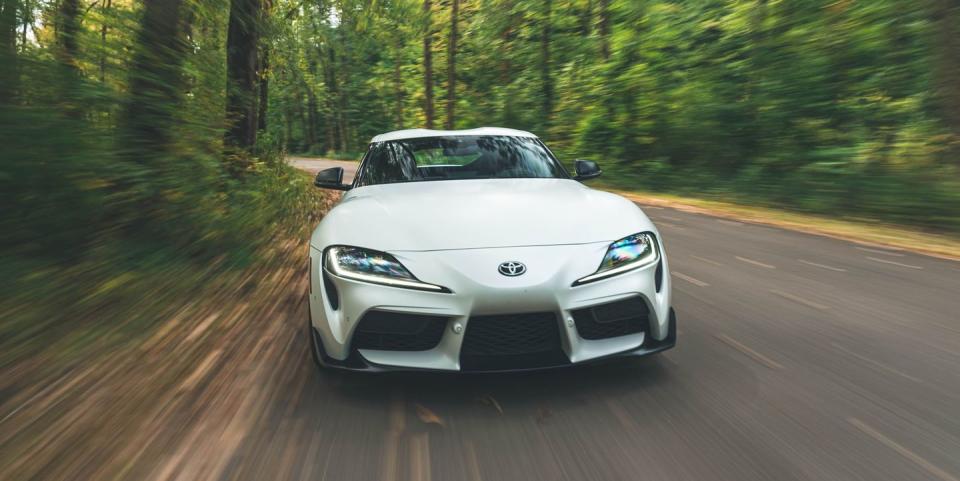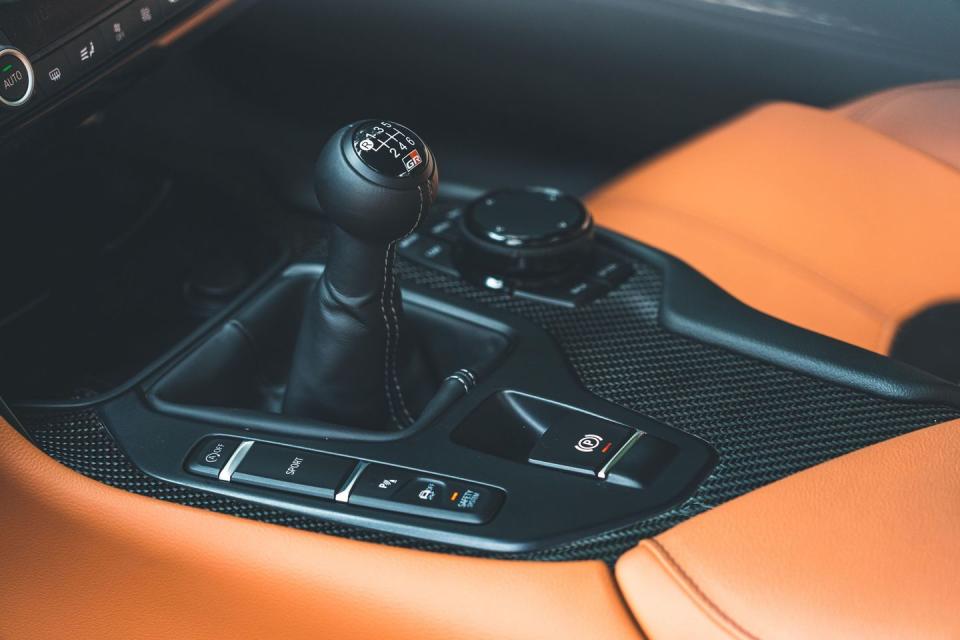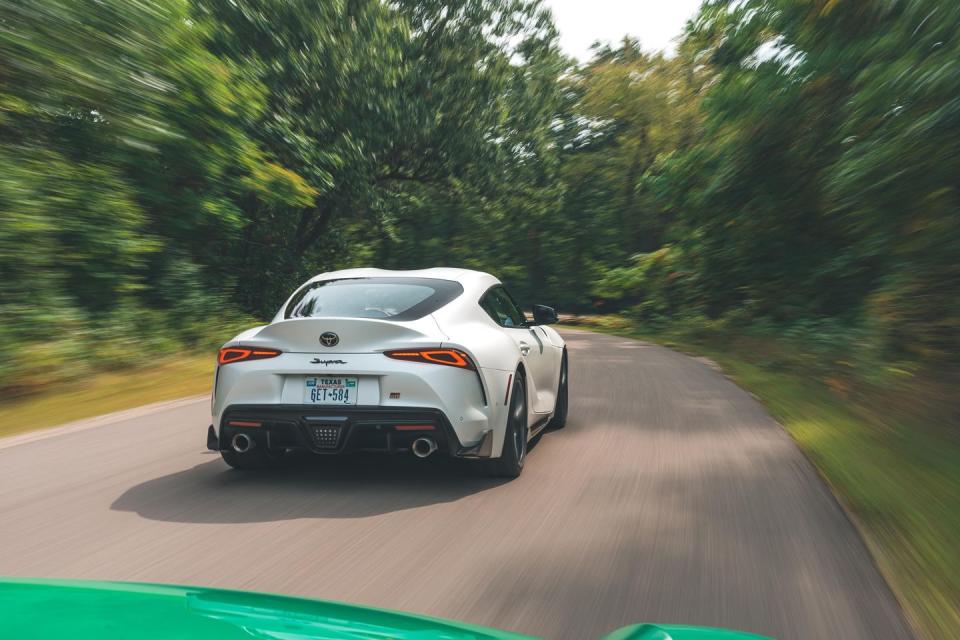Tested: 2023 Toyota GR Supra 3.0 Manual Answers Our Pleas

UPDATE 10/14/22: This review has been updated with test results.
As soon as the current Supra was introduced for the 2020 model year, calls for a manual-transmission version flooded Toyota's PR desk. For many enthusiasts, something just didn't sit right about such a legendary nameplate at the top of the brand's Gazoo Racing–developed lineup being available only with an automatic. Fortunately, Toyota heeded the call to save the manuals, introducing a stick-shift Supra for 2023. It's as good as we'd hoped.
Available as a no-cost option on the 3.0 and 3.0 Premium models, the new six-speed stick mates solely to the Supra's lovely 382-hp turbocharged 3.0-liter inline-six. The base turbo 2.0-liter four remains automatic only. Pricing kicks off at $53,595. There also will be a 500-unit run of A91-MT special editions like our test car, which for $59,440 add model-exclusive paint options and trim, plus a cabin dressed in fetching tan leather upholstery.

Given the Supra's gestation alongside the still-automatic-only BMW Z4 roadster, Toyota had to get creative in packaging the manual setup. Slip inside the snug cabin and you might notice that the infotainment controller wheel has moved to the far right of the center console, making room for a shift lever situated within easy reach yet precariously close to the dash's center stack. Get too aggressive upshifting into third gear and you'll rap your knuckles on the climate controls. Similarly, your elbow might knock into anything sticking out of the center armrest's cupholders. Automatic rev matching is on by default, but you'll want to deactivate it via the center touchscreen when configuring the Individual drive mode, as the closely spaced pedals are ideal for effortless heel-and-toe downshifts.
The action of the shifter, with its small-diameter shift ball and narrow gates, is equally precise. Gears engage with satisfying resistance, like a greased ball joint popping into socket. Most important is the greater integration all of this brings to the Supra's driving experience—timing shifts, managing wheelspin, and better manipulating the car's balance. As good as the car's ZF-sourced automatic is, shifting your own gears will always be more fun. Rip through the ratios and you're more aware of both the turbo six's surge of low-end torque (368 pound-feet at 1800 rpm) and the strong pull to its 7000-rpm redline. Coordinate a perfect 3-2 downshift while the car is squirming under braking and the smiles simply come more easily.

Toyota optimized an existing ZF six-speed unit for the Supra by removing sound-deadening elements and fitting a larger, reinforced clutch assembly. At 3343 pounds, our example weighed 39 pounds less than the last automatic 3.0 model we tested in a recent comparison test. Manual-equipped cars also get a shorter final-drive ratio—3.46:1 versus the eight-speed auto's 3.15:1—but the manual's individual gear ratios and overall gearing are considerably taller than the automatic's. The long, linear travel of the Supra's clutch pedal makes setting off easy, and the weighting of the left pedal helps with metering its takeup yet is light enough not to induce leg cramps. Get the launch right and the manual car sprints to 60 mph in 3.9 seconds—a mere 0.2 second slower than the automatic 3.0 model—and even with the mechanics of DIY shifting stretching its quarter-mile pass to 12.4 seconds at 115 mph, it trips the lights only 0.2 second behind its sibling yet is traveling 1 mph faster.
To aid the transition, Toyota has retuned the manual car's traction-control system and tweaked the stability control on all 3.0 models to rein in the Supra's tendency to rotate when the driver abruptly lifts off the accelerator in corners. A new Hairpin+ function relaxes the standard electronically controlled limited-slip differential in ultratight bends. Six-cylinder versions also receive updates to their electrically assisted steering and revised adaptive dampers aimed at improving ride comfort and body control. The latter tweak is particularly noticeable when moving quickly over less-than-perfect pavement, where the updated car feels imbued with a greater sense of composure than we remember.
The tradeoff for the manual setup is an EPA combined estimate of 21 mpg—a significant 5 mpg less than the automatic 3.0 model earns. But after finally experiencing the latest Supra as the sports-car gods intended, we wouldn't have ours any other way.

You Might Also Like

 Yahoo Autos
Yahoo Autos 
